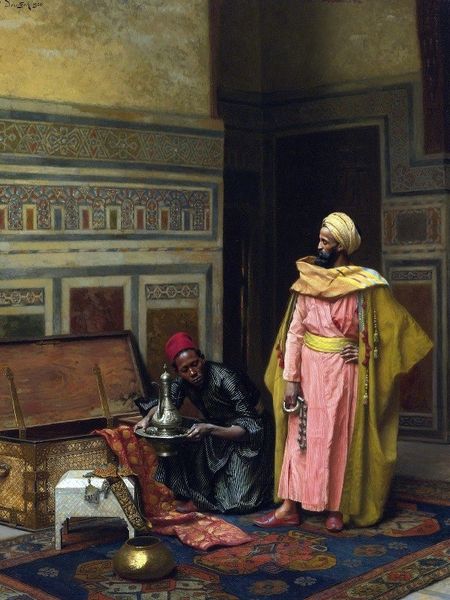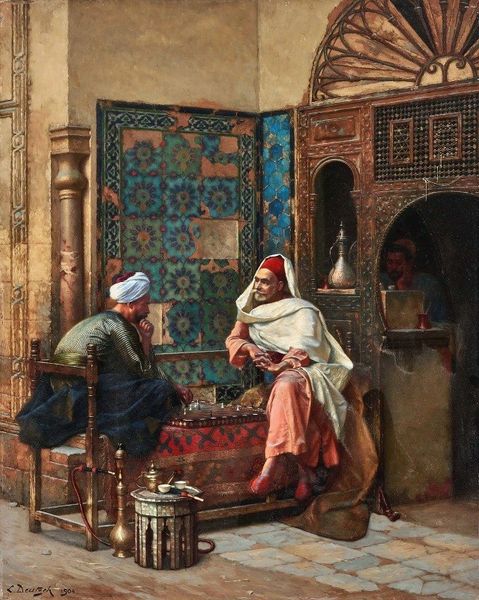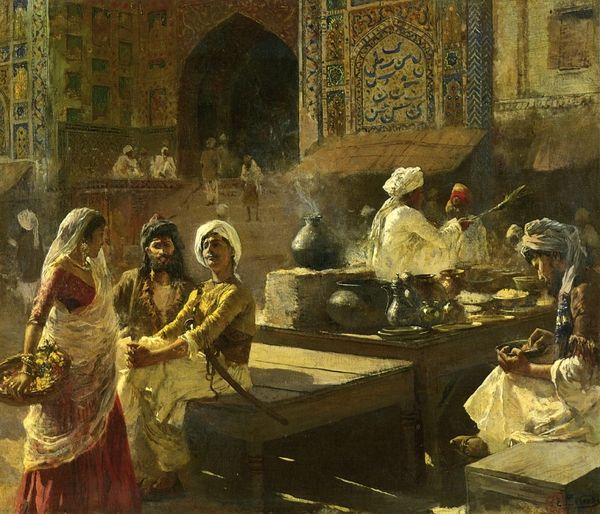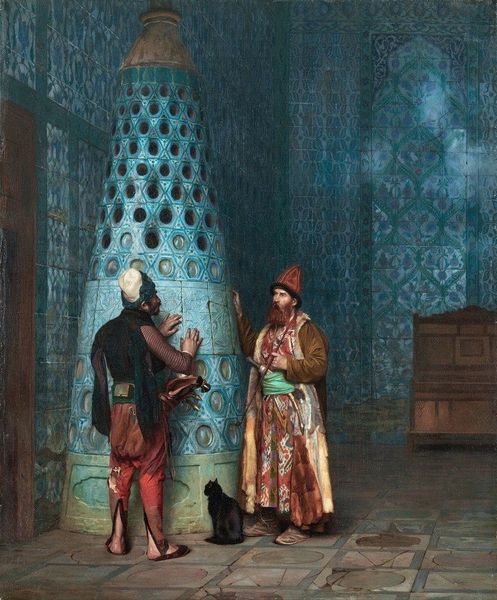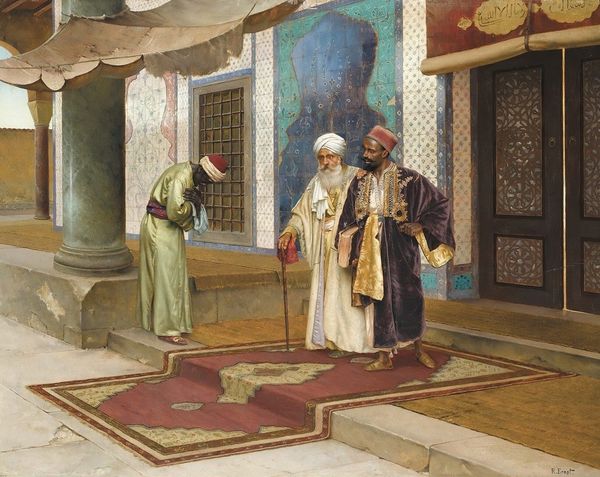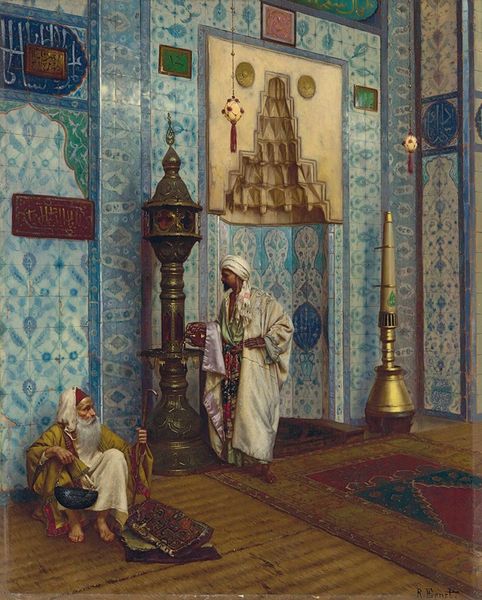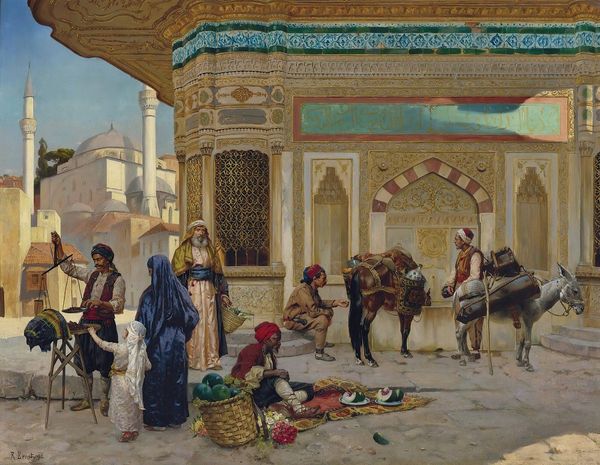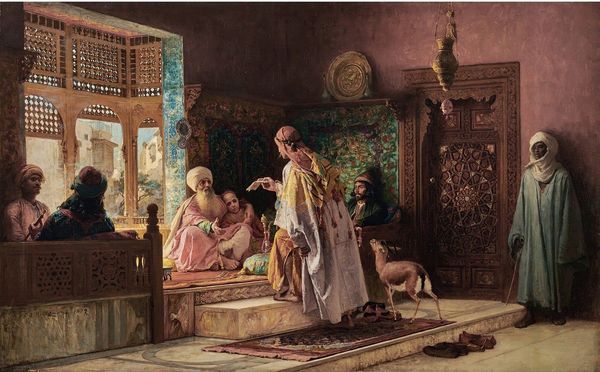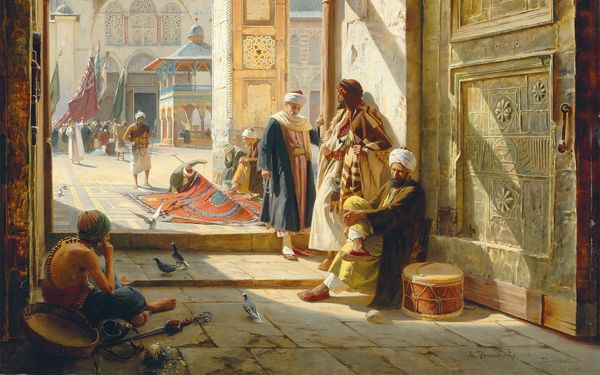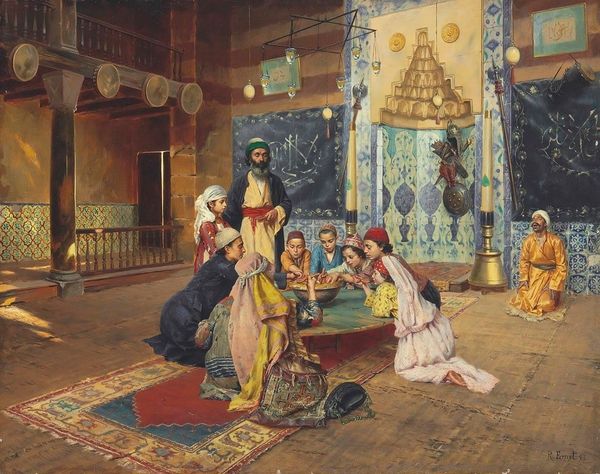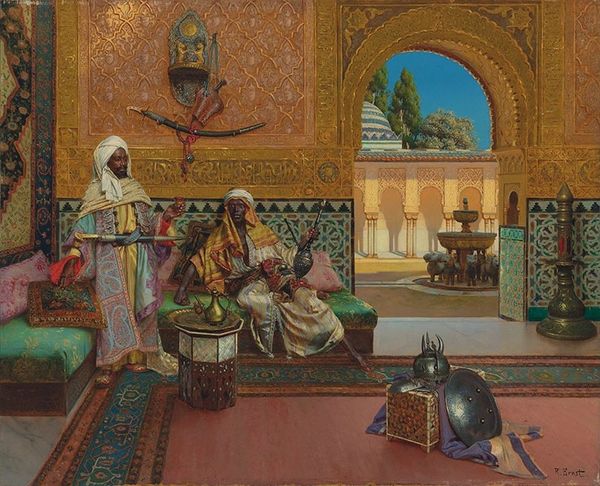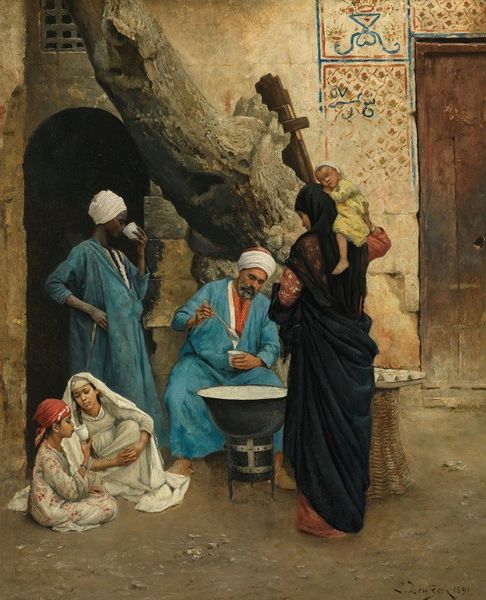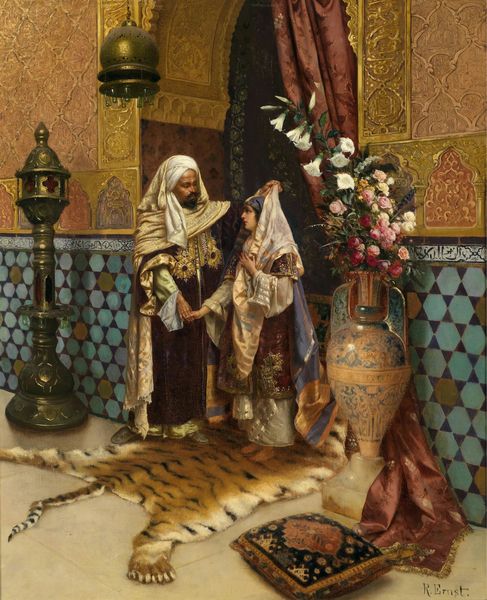
painting, oil-paint
#
painting
#
oil-paint
#
figuration
#
oil painting
#
orientalism
#
genre-painting
#
academic-art
#
realism
Copyright: Public Domain: Artvee
Curator: Here we see Rudolf Ernst's oil painting known as "The Hammam," created in the style of Orientalism, likely during the late 19th or early 20th century. Editor: It feels surprisingly intimate for such a staged scene. The soft, diffused light almost makes you feel the humidity. I'm drawn to the textures—the intricate tilework, the draped fabrics, and even the rough texture of that earthenware jug. Curator: Ernst, like many Orientalist painters, never actually visited a real hammam. These works were produced and consumed in the West as representations of the exoticized East. The popularity of the theme speaks volumes about colonial attitudes and desires. Editor: But regardless of its problematic context, there’s a remarkable study of color at play. Notice how Ernst uses a limited palette—primarily earth tones and muted jewel tones—to create a sense of harmony and calm. The balance and repetition add to the stability and clarity. Curator: Absolutely. The details—the patterned tilework, the clothing, even the faces—are rendered with an exacting realism meant to convey authenticity to a European audience with a pre-set interest in the "other." Yet the "realism" here served political ends. The image offers an idealized—and perhaps voyeuristic—vision that omits any suggestion of a local or contemporary narrative. Editor: Do you see that single light source entering from an unseen window on the left? The whole painting rests on it to move your eye through the image. I can imagine him considering it carefully—highlighting those lovely folds on the woman's robe as she approaches the doorway. Curator: Precisely. Works like "The Hammam" helped perpetuate specific narratives and further contributed to the colonial project by depicting a particular world the European viewer felt entitled to, in that it became, in their imagination, conquered, known, and understandable through images. Editor: Still, separating the context and the social impact, you have to be arrested by its beauty as pure form. It represents more than just an aesthetic construction, it is a visual feat. Curator: It's true that the art stands as a testament to Orientalism’s grip on the European imagination—even when, or especially when, deployed by talents such as Ernst. Editor: Well, whether one can accept its context or not, its power lingers in the mind long after you step away.
Comments
No comments
Be the first to comment and join the conversation on the ultimate creative platform.
